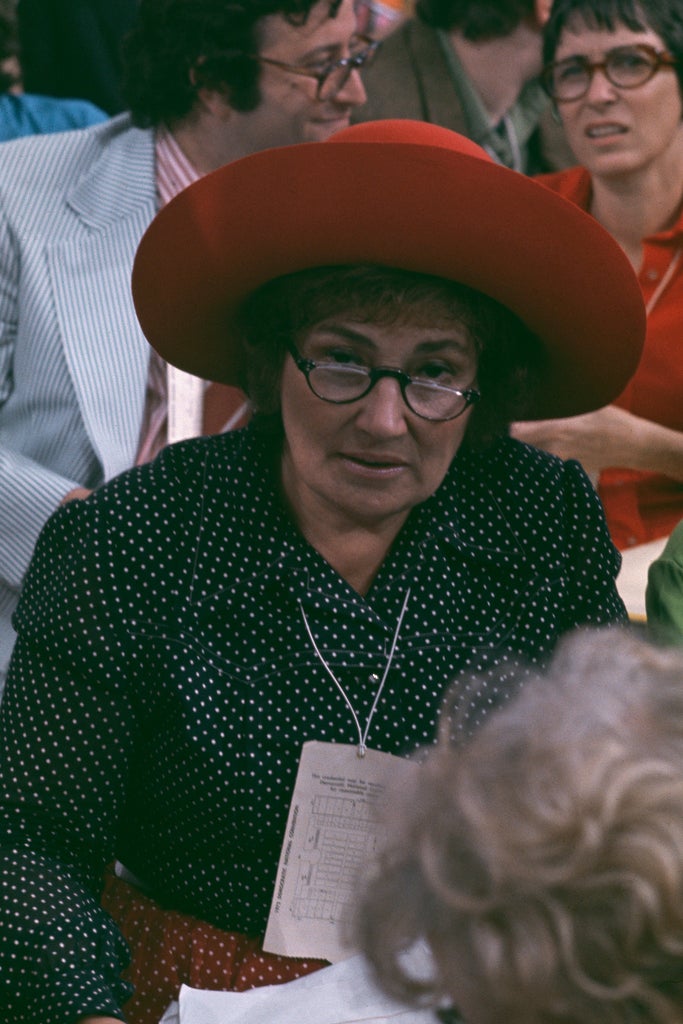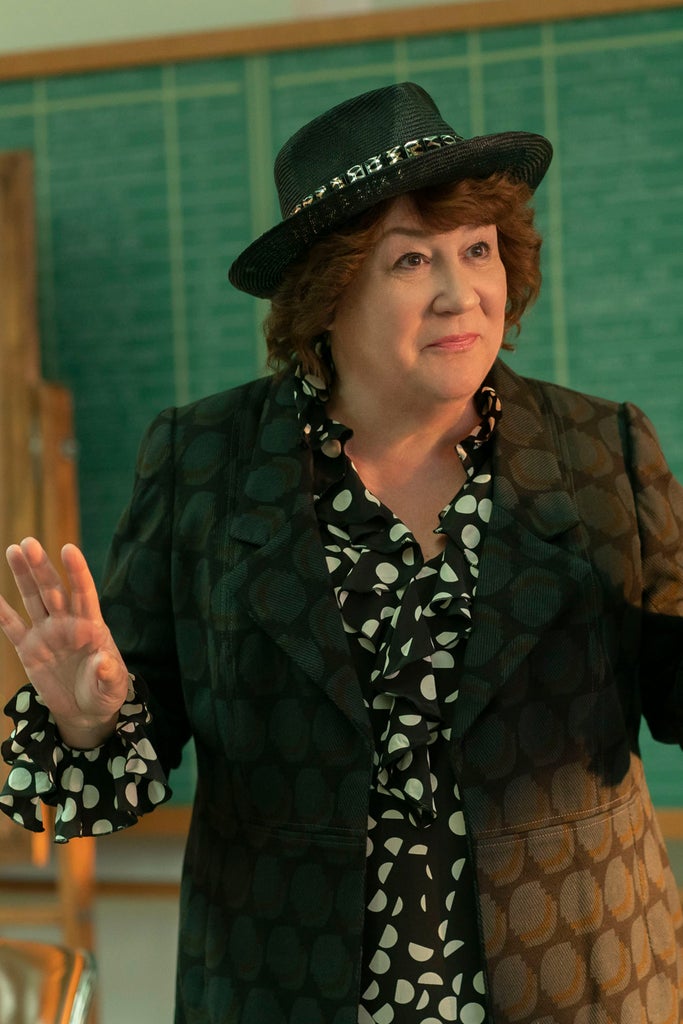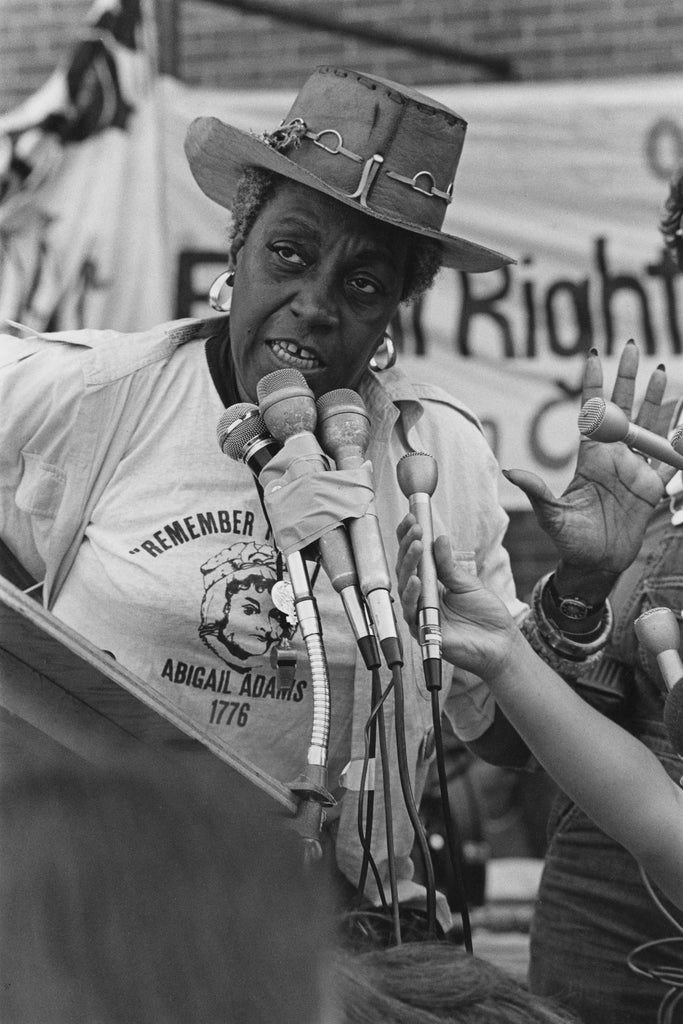From its stomping opening credits and all-star cast to the pithy one-liners and slamming disco-infused soundtrack, Mrs. America is a slick and spirited delight. The nine-part series charts the thorny battle during the 1970s to pass the Equal Rights Amendment (ERA) to the US Constitution, introducing us to the second-wave feminists fighting for progress and the socially mobilised Christian conservative housewives trying to stop them. Co-created by one of Mad Men’s writers, it’s aesthetically stunning and sparkling with standout performances from Cate Blanchett, Uzo Aduba, Sarah Paulson, Tracey Ullman and Niecy Nash. By the end of the series we’ve learned far more about key figures in the women’s liberation movement (and their opponents) than we do in most mainstream retellings.
Though sometimes veering into the territory of pitching women against women, this is far from a two-party battle: as episode nine draws to a close we see how, in devastating and subtle ways, the betrayal ultimately comes from the men in power. As Rose Byrne’s Gloria Steinem says: “They finally found a smokescreen for their own chauvinism: women.” Steinem herself has called the show’s representation of the fight “hopelessly wrong” (Mrs. America’s makers didn’t consult the real individuals involved but exercised artistic licence to depict private conversations and relationships) but we do learn a lot from the ERA’s timeline, some of which is eerily relevant today. Whether it’s the sidelining of Black voices by white feminists in the movement, the tension between domesticity, motherhood, independence and work on both sides of the political spectrum, or the Christian family values-fuelled ideology that led to masses of right-wing white women voting for Donald Trump 40 years later, as co-creator Dahvi Waller says, the show serves “as an origin story of today’s culture wars – you can draw a direct line from 1970 to today … and really understand how we became such a divided nation.”
Politics aside, Mrs. America is worth a watch for the clothes alone. Of course the outfits shouldn’t overshadow the women and their work but each character’s personal style has something to reveal, as sartorial choices are made to reflect – or detract from – their political stance and social standing. It isn’t as clear-cut as groovy vs prim, though; we see women on both sides of the divide dieting, dyeing their hair and applying makeup, proving that women feel the pressure of the patriarchy and use aesthetics as a tool of self-expression regardless of their political agenda.
As the series covers the entirety of the 1970s, costume designer Bina Daigeler highlighted the women’s evolving style, from Phyllis Schlafly’s stuck-in-the-’50s pastel skirt suits and Bella Abzug’s eclectic collection of hats to Gloria Steinem’s statement specs and Flo Kennedy’s penchant for a cowboy hat. Here’s how the style and substance of Mrs. America overlap and intersect – providing some sublime ’70s outfit inspiration along the way.
Gloria Steinem


Gloria Steinem’s image is one of the reasons she’s the most famous of the second-wave feminists. The pioneer’s model looks drew attention from all corners: men pitched her as the most ‘appealing’ of the feminists while women at once encouraged her to be the face of campaigns to further the cause and criticised her prettiness for overshadowing the movement’s message. It wasn’t just her appearance that aligned her with Hollywood stars of the time, though: always wearing her long centre-parted hair tucked into her XXL aviator glasses, she had a penchant for Lauren Hutton-style silk jumpsuits and Ali MacGraw-esque turtlenecks which made her the cool, young face of women’s liberation. Often seen in miniskirts, form-fitting flared jeans and psychedelic printed shirts, Steinem’s bohemian style not only lent a contemporary cool to the movement but also reflected a new liberal frontier for women: whether it was the choice to have an abortion or don a thigh-high hemline, what a woman chose to do with her body was none of your business.
Steinem’s style epitomises the strand of ‘70s fashion that still enchants designers today. From Chloé to Hedi Slimane’s Celine, season after season the catwalks are flooded with sartorial cues from the decade, as seen on Steinem in the show. Sourcing both current-season designer and vintage pieces – shearling coats, oversized sunnies, silk scarves, autumnal hues and platform shoes – to style the characters, Daigeler conceded: “I had much more fun with all the feminists.”
Phyllis Schlafly


Daigeler said she used colour first of all to create a contrast between the anti-ERA housewives’ aesthetic and the groovy garms of the feminists: “Phyllis and the antis are all in these pastels,” she told W Magazine. Taking inspiration from 1960s ads, where women were “wanting to look pretty for when [their] husband came home,” Cate Blanchett’s Schlafly is all duck egg blue blouses, mint green bouclé jackets and semolina yellow circle skirts. Her ice-cold restraint (she reins in public scenes caused by Sara Paulson’s Alice Macray, bites her tongue when men make offensive jokes in her presence and never loses face, even at home) is reflected in her suffocating attention to detail: no button is left undone, no hemline slips above the knee, no hair is out of place.
The formality of Schlafly’s dress is an extension of her values: a woman’s place is in the home and you better believe she’ll wear a ruffled blouse and pencil skirt to bake an apple pie, just as she will to attend a Sunday service. Funnily enough, over the last 10 years or so Miuccia Prada’s ladylike DNA has turned this sort of saccharine, prim and proper get-up into the thinking woman’s uniform – only when positioned in contrast to the bohemian flavour of the libbers does the conservative aesthetic feel stuffy once again.
Shirley Chisholm


Not all of Mrs. America’s outfits fall into diametrically opposed camps of bohemian dresses and prudish twinsets. One of the show’s biggest revelations is Uzo Aduba as Shirley Chisholm, a figure often overlooked in feminist history – a narrative that favours cis, straight, white women – but a vital player and woman of many firsts. The first Black woman elected to the United States Congress and to run for the Democratic Party’s presidential nomination, she operated in spheres dominated by men and white women, groups which bulldozed Black women on the path to their own victories. A far cry from the Woodstock meets Studio 54 style of the rest of the libbers, when it came to dress – much like in her political career – Chisholm played by her own rules. More pointed and pulled together (after all, her campaign slogan read “Unbought and Unbossed”), Chisholm favoured bright colours, geometric prints, pussybow necklines and cat-eye glasses (plus a collection of brooches to rival Lady Hale’s).
Bella Abzug


Bella Abzug, played by Margo Martindale, was a force of nature. Her formidable character and willingness to stand up to Washington’s sea of grey suits – most notably President Jimmy Carter in 1979 – enabled great strides for the ERA but also saw many of her congressional staff quit (she was known as a tyrant who wielded cutting words and held no prisoners). You can’t talk about Abzug without paying homage to her array of hats, which her mother told her to wear so that men wouldn’t mistake her for a secretary – another way in which women’s seemingly innocuous sartorial choices play host to considered political moves in the battle for equality. From straw sun hats to wide-brimmed felt numbers, Abzug’s eccentric collection drew as much attention as her communication style. The chintzy florals and more staid dresses she dons also act as visual codes of difference between the older and the more progressive feminists of the movement. After threatening to turn her back on lesbian rights – Steinem, in disbelief, says: “You were a bigger radical than me when we met!” – Abzug laments to Betty Friedan, another of the older generation: “Does it bother you that no one calls you radical anymore?”
Flo Kennedy


Another star in the show’s crown is lawyer Florynce “Flo” Kennedy. Her name is largely absent from the mainstream narrative but during the ‘60s and ‘70s she was one of the most captivating and well-known Black feminists, and her legacy should be respected and revisited. A leader in building alliances between the mostly white women’s liberation movement and the Black Power movement of the time, she mentored young women, staged countless grassroots protests (including a “pee-in” to protest Harvard University’s lack of women’s bathrooms) and was integral in repealing New York’s harmful abortion laws. Another activist who used her clothes to draw attention to her politics, Kennedy shook off all prescribed ideas of what women should wear. Known for her flamboyant Western-inspired attire, from her incredible trademark cowboy boots and hat to suede jackets and drawstring bolo ties, she marched to the beat of her own drum – both sartorially and politically – and in so doing, changed the course of feminist history.
Betty Friedan


Writer and activist Friedan, expertly portrayed by a gravel-voiced Tracey Ullman, is often considered the mother of the movement thanks to her 1963 book The Feminine Mystique, which identified domesticity as the root cause of women’s lack of progress. She founded the National Organisation for Women (NOW) and organised the 50,000 person-strong Women’s Strike for Equality, which led to some women gaining the right to vote. As Elizabeth Banks’ Jill Ruckelshaus says in the show, women were “wandering in the wilderness for 40 years before Betty lit a match.”
In Mrs. America, though, we see Friedan struggle to stay relevant as she comes up against younger feminists pushing for the representation and rights of the LGBTQI+ community (Friedan was known for her homophobia, calling lesbians the “lavender menace”). We see Friedan’s complex personal life unfold, too, from being excluded by girls at school for being Jewish to her husband leaving her for a younger woman – throughout all of which she wears dagger collar blouses and Diane von Furstenberg wrap dresses. When deciding what to wear for a date, she reaches for a Bardot-style wiggle dress that she wore for a television appearance at the height of her influence, once again showing how these women summoned strength from their wardrobes as well as their politics.
Mrs. America is streaming now on BBC iPlayer.
Like what you see? How about some more R29 goodness, right here?
The ‘Mrs. America’ Cast Vs. The Real People